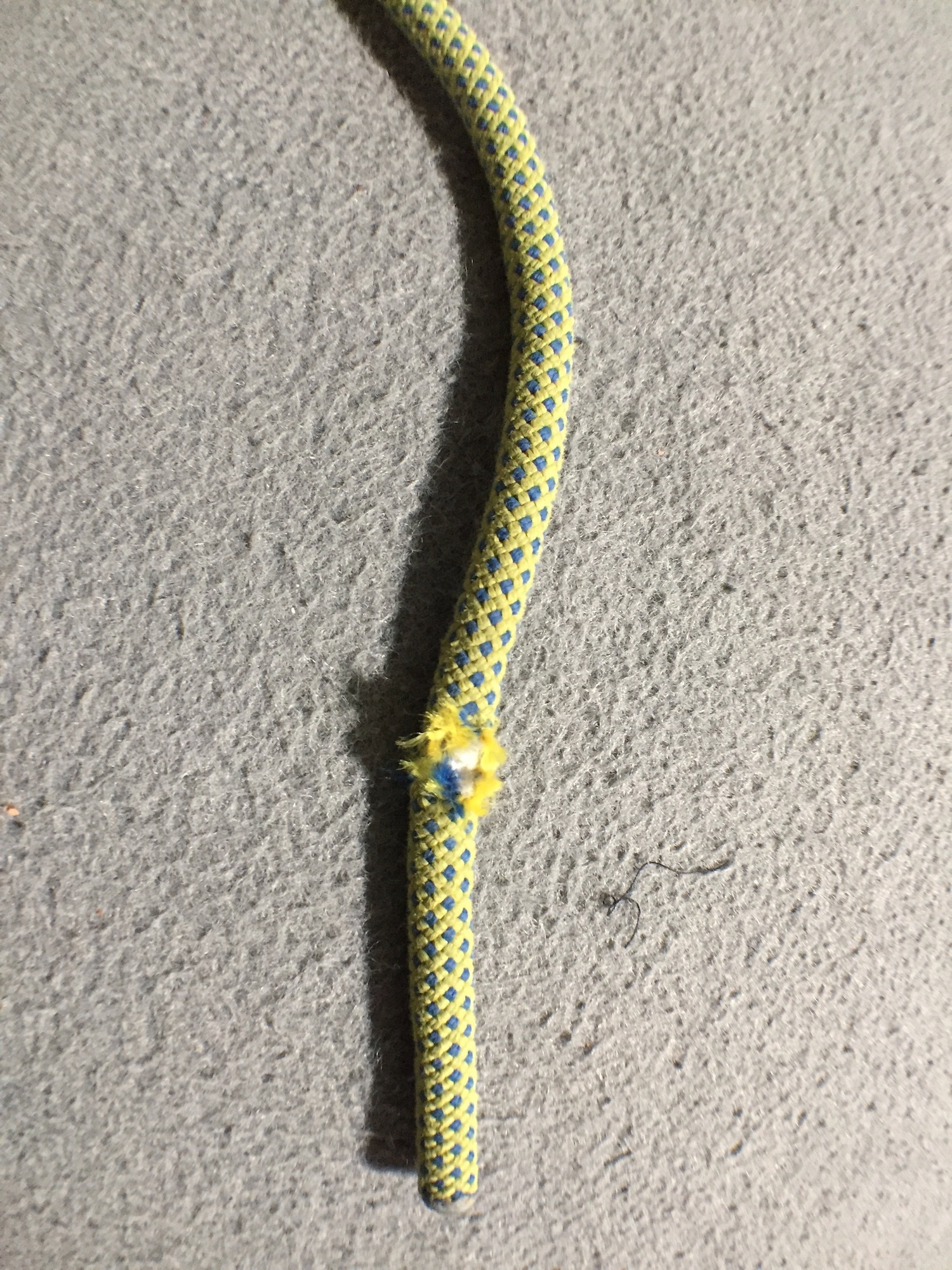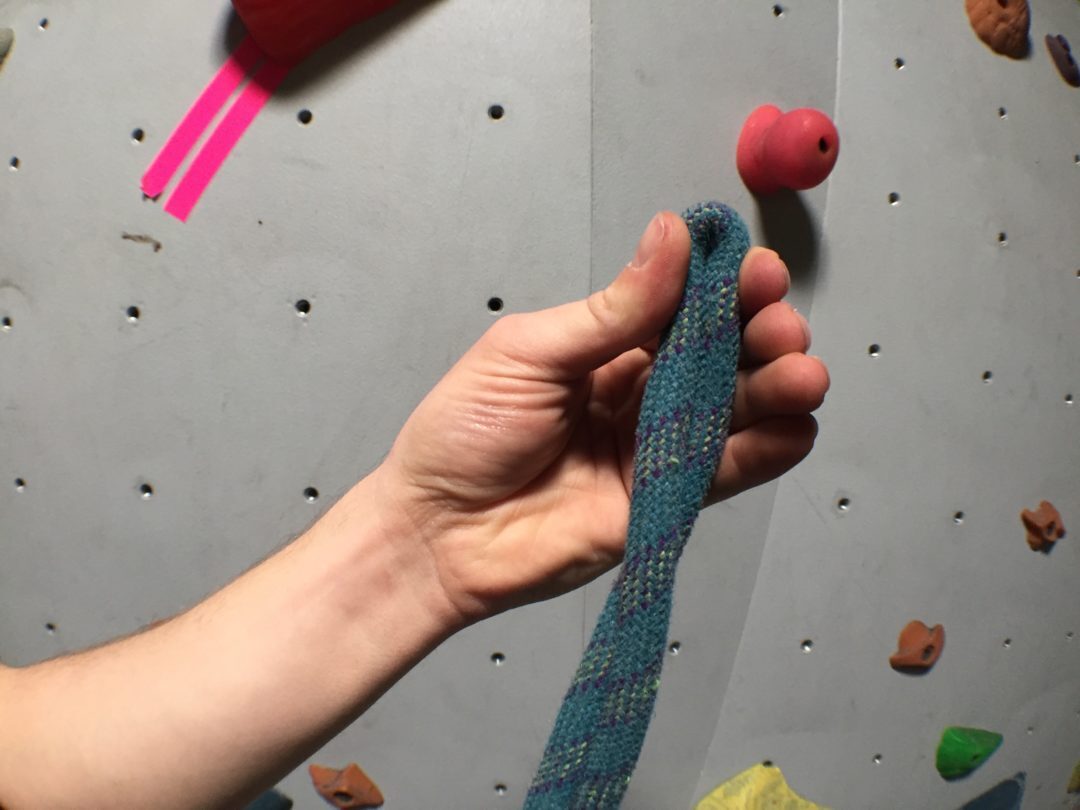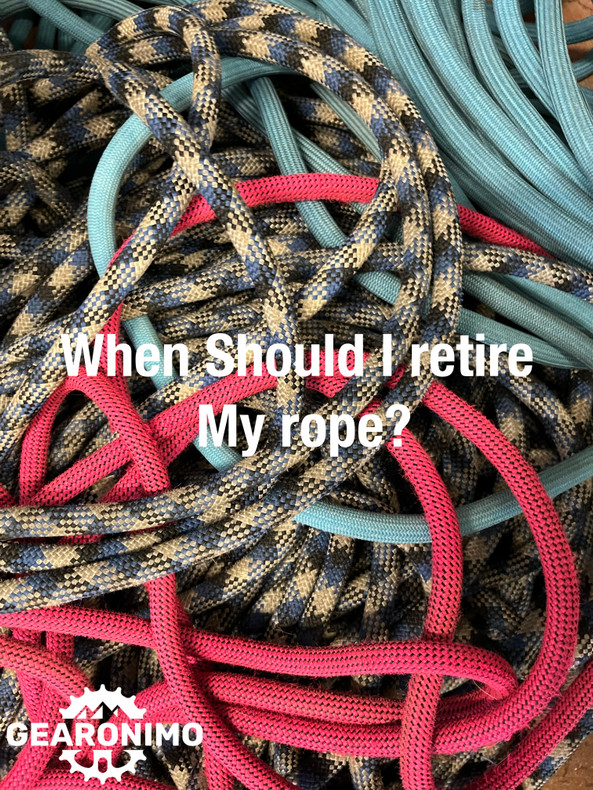When should I retire my climbing rope
You might have found yourself asking when should I retire my climbing rope. Oftentimes, whenever the question is asked is when you should retire it? We'll go over a few things to look out for so you know you're making the right decision.
Let's first explore the construction of a climbing rope. A rope can be broken down into two simple components: the sheath and the core. Being made of nylon, the main job of the sheath is to protect the core while also providing some strength. Also being made from nylon, the core of the rope gives it the majority of its strength while also providing the dynamic characteristics of a climbing rope. If either the sheath or the core gets damaged, this is when you should think about retiring the rope.

(You can see the individual strands that make up the core, and how they are protected by the sheath.)
Some people only consider a core shot to be when the core of the rope is coming out of the sheath. While this is VERY bad, your rope could still have a core shot even if this isn't the case. If the core becomes soft, this shows that the core could still be damaged and might need to be retired.

(This is an example of where the core of the rope is showing.)
This is my go-to test to check my rope.
To do this, take a section of rope that you know is not damaged, bend it, and then start to squeeze. Take mental notes of how hard you have to push and how small the gap gets. This is now your baseline for your rope.

Next, take your suspicious section of rope and do the same thing — bend it, and then start to squeeze. Also, look at how hard you had to squeeze and how small the gap gets.

Now, if you're not squeezing very hard and it completely flattens as in the photo above, this is definitely a red flag and you should consider retiring or just cutting it shorter.
If you squeeze a little harder than the baseline and it deforms in an uneven way, this is when I would start to shop and look for a good deal on a rope. It's not quite done, but it's not as good as you want it to be.
From normal wear and tear, frayed spots will begin to form on the sheath. This is not a huge deal, just something to monitor and make sure it doesn't get worse.
When I was climbing Castleton Tower, I was belaying my second up the last pitch when I noticed a fuzzy spot on the rope. Once we summited and took in the view for a little bit, I decided to look at that fuzzy spot. It ended up being a little core shot! While there are ways of isolating the damaged section of rope and passing the knot on the rappel, my partner and I didn't safely know how to do this and didn’t want to try it out almost 500 ft off the deck. So we had to rap the tower knowing our rope was damaged. I would not recommend trying this. Getting to see the "core shot" go through your rappel device on the way down with nothing except a few hundred feet of air below you is not a great feeling.
With all that being said, I would always encourage playing it safe and retiring your gear when it starts to make you or your climbing partner uncomfortable. Your life is worth spending an extra $100–$200 to get safe gear.
***Disclaimer, Climbing is an inherently dangerous activity, and gear failure can result in serious injury or death. Always inspect your equipment thoroughly and follow the retirement recommendations provided by the manufacturer. The information provided in this article is for educational and informational purposes only and is not a substitute for professional instruction or manufacturer guidelines, err on the side of safety when making your desition.***
Photos are credited to https://mesarim.com/academy/2018/10/15/rope-check-fundamentals/

